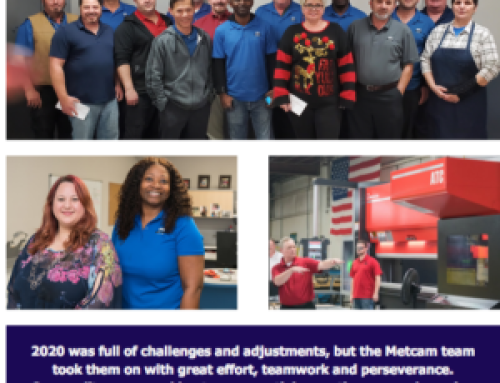The industrial real estate sector is bracing for the impact of recent steel tariffs on two fronts. Industrial manufacturers could see their bottom line shifting as the cost of production increases. And industrial/distribution facility construction costs could rise with the price of raw materials.
“Pricing has gone up significantly just with the threat of tariffs,” said Bruce Hagenau, co-owner and president of Metcam, an Atlanta area-based manufacturer. “We’ve already been hit with a 15 percent increase on average for the book of materials that we buy. The unintended consequence or ripple effect of putting a tariff on a raw material like that is pretty significant for those of us that use it.”
Dr. Walter Kemmsies, managing director and economist at JLL, a global real estate services company, added to that theme: “Tariffs can have unintended consequences because global supply chains are so complex. Trade data doesn’t reflect the reality of global supply chains, and supply chains don’t care about political borders.”
In order to mitigate the impact of a steel tariff, industrial companies such as Metcam, which uses only U.S. steel in its sheet metal fabrication, usually try to raise prices for customers. If successful, however, such a move puts those firms at a competitive disadvantage against international competitors that reside in low labor cost countries and use cheaper raw materials.
“The tariff impact on the income statement is direct and immediate, but the longer term threat of losing additional business to international competition as a result of having to raise prices is probably the bigger concern,” said Hagenau.
Then there’s the cost of building new facilities. According to the Bureau of Labor Statistics, the annual rate of increase in the price for new nonresidential building construction jumped from 0.4 percent in 2016 to 3.5 percent in the 12 months ending in September 2017. The construction costs for industrial buildings were up 4.5 percent and 4.1 percent for warehouse facilities.
Barbara Byrne Denham, a senior economist in the research and economics department at Reis Inc. in New York, said that commercial construction is already seeing exorbitant costs due to very high demand and a lack of skilled labor. A steel tariff will only make things worse.
“It could have a serious impact on the cost of construction,” she said. “Probably few industries are facing the dual challenges of tariffs and immigration [restrictions affecting labor supply] quite like the construction industry is. But it’s very hard to say how long this will last and how serious it will be.”
A good case study might be the residential construction industry. Since President Trump levied tariffs, ranging from 3 to 24 percent, on five Canadian lumber companies in April 2017, lumber prices have increased 31 percent, according to Bloomberg data. Cushman & Wakefield reported that the price of U.S. steel, 42 percent of which is used by the construction industry, increased 19.3 percent in the two years leading up to tariff announcement.
The resulting increase in raw goods (and ultimately consumer prices), plus higher construction costs and decreased employment figures are all inhibiting factors for industrial development, but the question, as Denham noted, is to what degree. Kemmsies, the JLL economist, said the boost in steel jobs could come at the cost of “downstream industries” like construction, automobiles and petroleum.
The Trade Partnership Worldwide, LLC, reported that 18 jobs would be lost for every steel/aluminum job gained. The tariffs and retaliation by affected countries would increase U.S. steel employment and non-ferrous metals (primarily aluminum) employment by 26,346 jobs, but cost 495,136 jobs throughout the rest of the economy. More than two-thirds of the lost employment would affect workers in production and low-skill jobs.
Industrial/distribution property ranked No. 1 in both development and investment prospects coming into 2018, according to PwC and Urban Land Institute’s annual survey of more than 2,400 commercial real estate professionals. Taxes and regulation ranked third for that group on a list of financial concerns for the year.
Fueled by stout e-commerce growth, the top CRE sector certainly has the staying power to endure near-term tariff headwinds. Also, compared to office and multifamily construction, warehouses use a lot more concrete than steel. However, some are asking whether industrial-strength adversity could be on the horizon. Is this tariff but the first chapter in a disruption of construction starts, supply chains and consumer confidence?
“In order for it to make any sense to me, I think not only do you have to put the tariff on the raw materials, you also have to put tariffs on incoming finished goods that are using the cheaper steel overseas,” said Hagenau at Metcam. “But then you’re talking full-fledged trade war, which I guess is the fear of where it’s going to go anyway.”



 QUALITY POLICY
QUALITY POLICY ENVIRONMENTAL POLICY
ENVIRONMENTAL POLICY